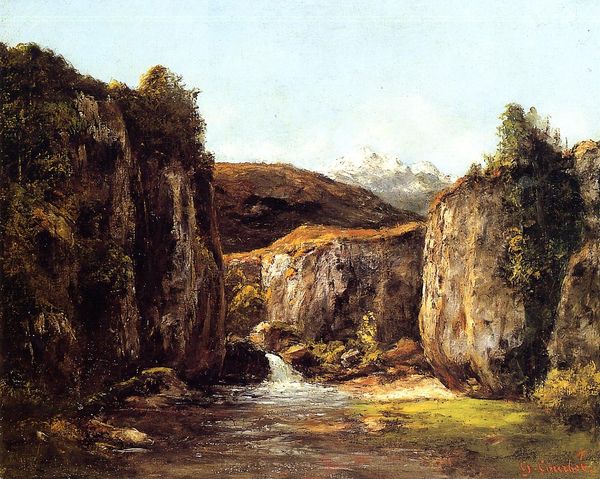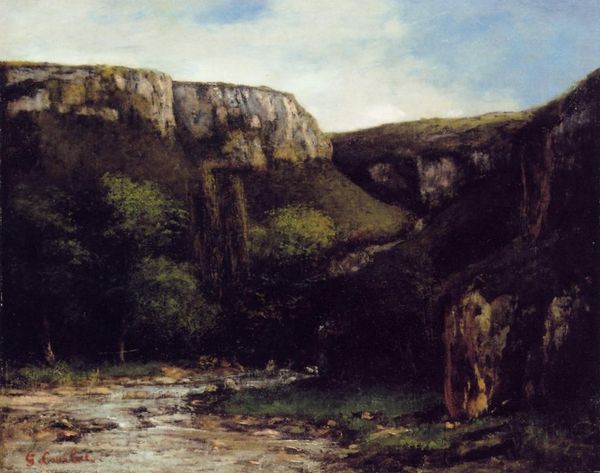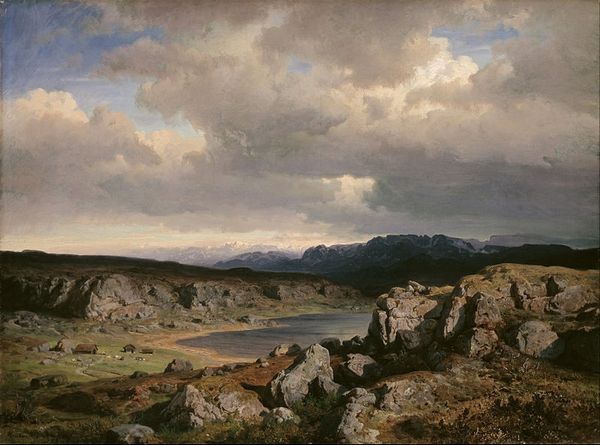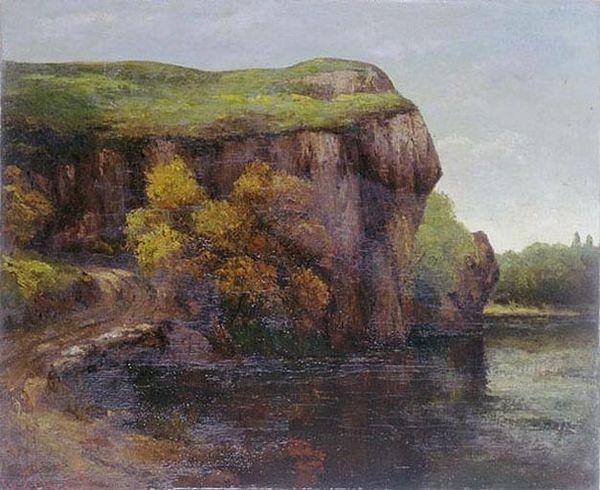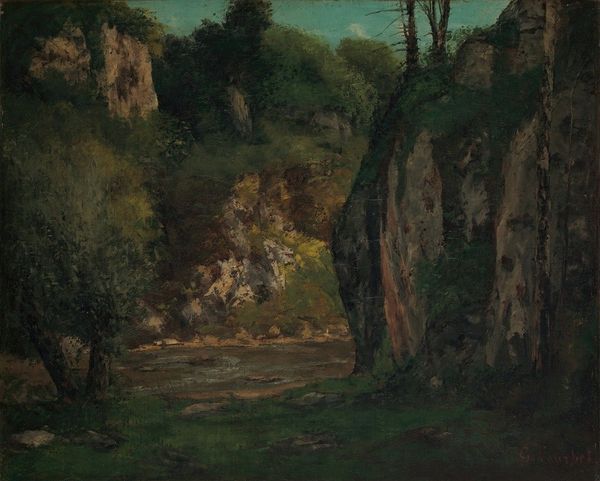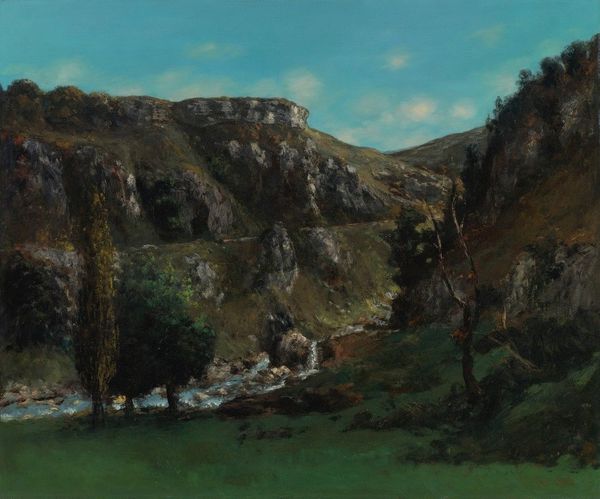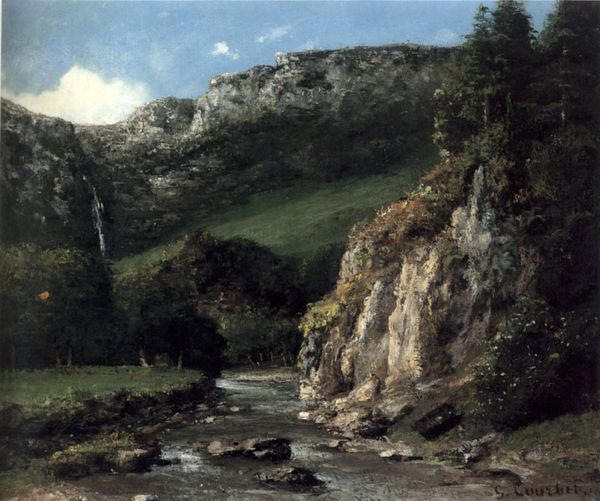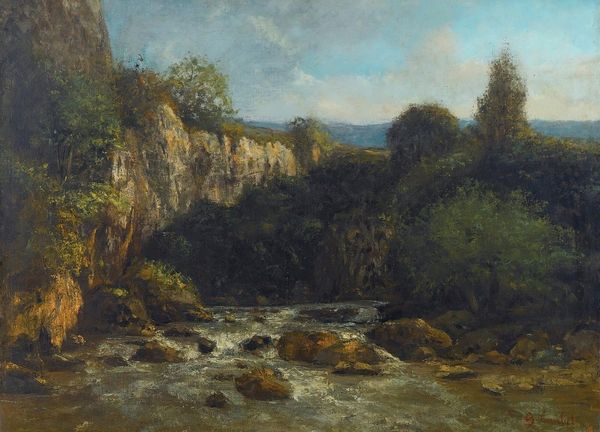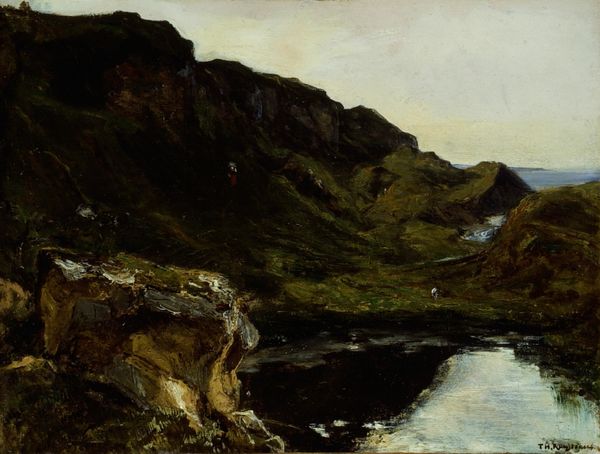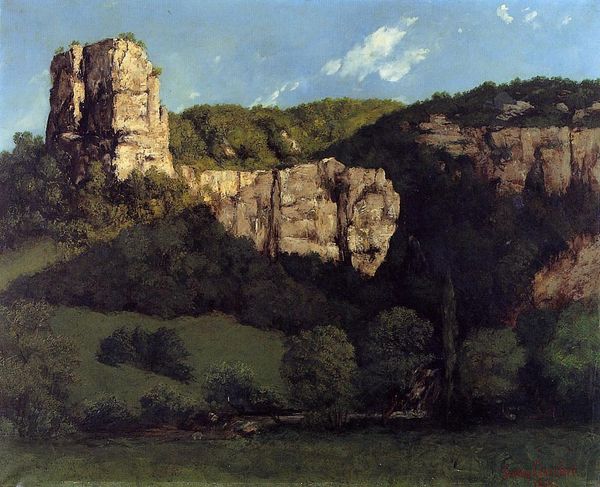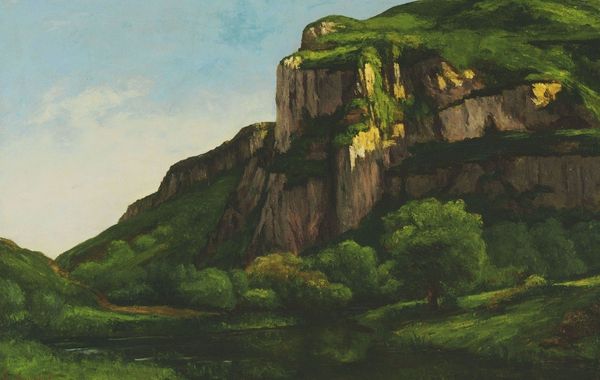
Copyright: Public domain
Gustave Courbet captured this landscape with paint on canvas, and here, the cliffs stand as silent witnesses, their imposing presence resonating with a primal, almost archaic power. Think of the cave, a motif recurring throughout human history. From the earliest cave paintings to the philosopher Plato's allegorical cave, it symbolizes both refuge and the unknown, a space of hidden knowledge and potential danger. Courbet’s cliffs, with their shadowed recesses, evoke this duality. In a similar vein, consider the Romantic landscapes of Caspar David Friedrich, where nature overwhelms the human figure, inspiring awe and a sense of the sublime. Here, the cliffs overshadow the observer, triggering a deep-seated, almost subconscious response, echoing the way we perceive and interact with the natural world. These geological forms engage us on a profound emotional level, reminding us of the enduring, cyclical nature of existence.
Comments
No comments
Be the first to comment and join the conversation on the ultimate creative platform.
